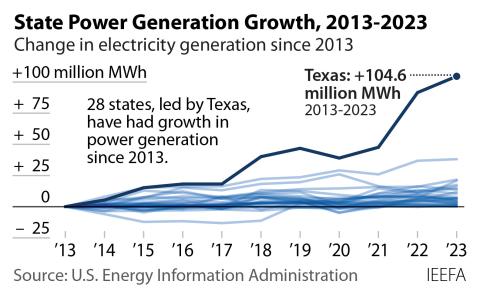How Puerto Rico’s Electric Company Can Seize the Day
Puerto Rico is all over the news lately because of its debt crisis. The U.S. territory has about $72 billion in debt, and its governor has said Puerto Rico is unable to pay it all back.
The Puerto Rico Electric Power Authority, which owns and operates the electrical system on the island, is part of the problem. PREPA, which has about $9 billion in outstanding debt, narrowly avoided defaulting on its last bond payment, on July 1, and has a deadline of Sept. 1 to reach a debt-restructuring agreement with its creditors.
On the bright side, the problems PREPA faces—serious as they are—present the authority an opportunity to embrace reforms that are long overdue and that are more forward-looking than anything its leaders are currently considering.
PREPA is at a turning point not just in terms of its finances but also with respect to its electrical system. It is one of the oldest and dirtiest electrical systems in the entire country, and Puerto Rico—this is where opportunity knocks—is an ideal location for renewable-energy development The agency owns about 4,700 megawatts of generation, and more than 80 percent of that generation comes from oil-fired plants. PREPA also purchases power from a coal plant, a natural gas plant, and several renewable-energy facilities. About 55 percent of all electricity produced on the island is generated from oil.
But changes, separate from anything having to do with the debt crisis, are being forced on Puerto Rico’s electrical system. Compliance with the EPA’s Mercury and Air Toxics Standard will require many of PREPA’s oil-fired units to be retired or to significantly curtail their operations. As a result of the EPA standard, PREPA has already been planning major new investment in its generation system over the next decade.
The two main proposals on the table call for PREPA to reduce its dependence on oil by doubling down on natural gas. The agency’s integrated resource plan, released in early July, spells out a natural-gas strategy that would simply convert many existing oil-fired power plants to natural gas and calls for construction of additional natural gas plants. By 2032, Puerto Rico’s electricity mix would be more than 80 percent natural gas under this scheme.
A similar proposal released by Lisa Donahue, a financial consultant brought in to serve as PREPA’s “chief restructuring officer,” is even worse, having PREPA 94 percent reliant on natural gas by 2030. PREPA seems to be leaning heavily toward replacing its over-dependence on imported oil with an over-dependence on imported natural gas, whether it adopts the most recent integrated resource plan or Donahue’s proposal.
PREPA, in other words, is about to invest an enormous amount of money in converting its electrical system to natural gas rather than seizing the day and building a renewables-driven system that taps Puerto Rico’s plentiful sun and wind. The integrated resource plan would have the agency making $3.3 billion in capital investments in this misguided move into natural gas from 2016-2025, $3.3 billion that would could be spent more wisely on renewable energy and energy-efficiency programs.
PREPA is at a crossroads but it has not chosen the wrong path yet. While it looks at the moment that the agency will most likely lock the island into an imported natural gas future, there’s still time to choose a path that makes more sense.
Investing in greater energy efficiency and more renewables is what Puerto Rico should be doing.
Cathy Kunkel is an IEEFA fellow.












